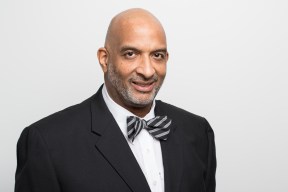When the Brown v Board of Education decision was handed down by the Supreme Court on May 17, 1954, officially ending legal segregation in schools and American society, there was one legal scholar that had some misgivings about the decision. His name was Derrick Bell.
Why was Bell so skeptical about the enduring legacy of the ruling. While the devastating detrimental effects of racial segregation to African Americans was clearly and expertly argued by the NAACP legal defense team led by Thurgood Marshall, Bell believed the case had been built on a flawed foundation. Though 240 plus years of legal slavery and another 150 plus years of defacto slavery and second class citizenship called Jim Crow segregation had been legally inflicted upon African Americans and upheld by the judicial system, Bell believed no system of redress for African Americans would ever succeed that was not aligned with the best interests of the white majority.
Good will and the Christian virtues of love, justice and restoration would never drive America to mete out justice and restore to African Americans what it had so viciously stolen from them mentally, physically, psychologically, economically, culturally and morally. According to Bell, the only effective means of redress had to be based upon what he called, “interest—convergence.” Simply put, the interests and racial equality of African Americans specifically or minority groups in general, could only occur when those interests aligned or converged with the interests of the “white” majority. And it is that shared interests that could lead to the creation of new laws and policies for the oppressed or disenfranchised community.
Today we can clearly see that Derrick Bell’s analysis was right on target because while Affirmative Action has been an effective means of redress for the offended party, African Americans, it was never seen as aligning with the interests of the White majority. And no matter how successful it has been in bringing some semblance of equity and fairness for African Americans, it was always blamed for discriminating against other offended or disaffected groups, instead of the majority community that controlled all of the power positions and seats in the society.
And the irony is the philosophical legal framework that was used in coming to this conclusion, is being legislatively outlawed by states across the nation. Critical Race Theory or CRT, as the extreme right wing magas are calling it, has been banned by 18 states already and 36 more have introduced laws or policies that restrict teaching about race and racism. Yet it is that legal analysis, which predicted this day would come over 60 years ago.
So then, what does it really mean when states are outlawing the teaching of the only legal analysis that correctly predicted that the only acceptable legal way for a minority, oppressed group or community to receive justice is when it aligns that remedy with the best interests of your oppressor. Does such a legal opinion call into question how blind lady justice really is?
Chief Justice John Roberts in his opinion in favor of striking down Affirmative Action writes, “We have never permitted admissions programs to work in that way, and will not do so today.” Yet he fails to acknowledge the fact that for over 2 centuries America did have admissions programs that only permitted one race and one gender admission into its institutions of higher learning and continues to do so for legacy admits who do not have the necessary test scores to justify their admission into the prestigious colleges and universities that they attend.
Next year would have marked the 70th anniversary of the Brown v Board of Education decision to end legal segregation in our schools across America, but on June 29, 2023, the Supreme Court’s decision ensured that there would be no Platinum Jubilee Celebration for Brown.
